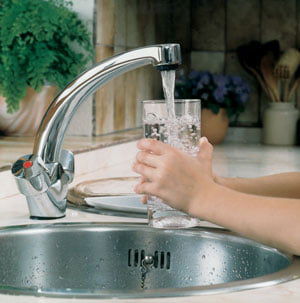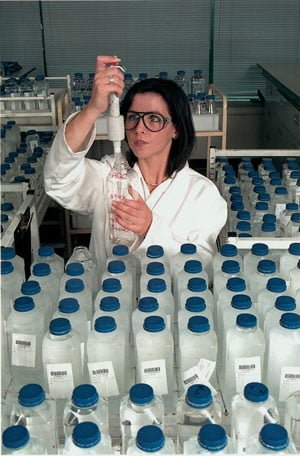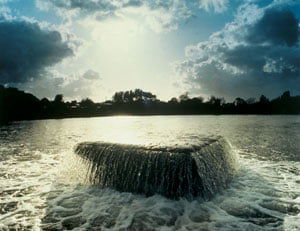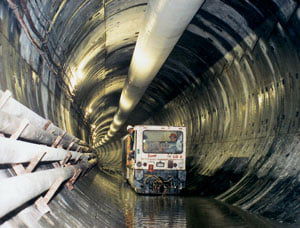
The term utility is widely used today to include those public services which supply water, sewerage, electricity, gas, telecommunications and waste disposal. All of us use these utilities every day – when we have a bath or a drink of water, light a gas fire, boil water for a cup of tea or coffee or turn on the light.
Until the 1980s, most of these utilities were owned and run as part of the public sector of the economy. In other words, they were run by government appointed business organisations to serve the needs of millions of individual households, industry and commerce. Because the government owned these organisations, it was able to direct the utilities to serve the public interest.
However, during the 1980s, ways of thinking about how businesses should operate changed. There was widespread feeling that the utilities could become more efficient if they were subject to competition and if they were run as public companies accountable to shareholders. The 1980s and the first half of the 1990s were characterised by privatisation – a process whereby the ownership of organisations passes from the government to private shareholders by the issuing and selling of shares.
The need for regulation

In order for the privatisation process to be successful, it was necessary to make sure that the public interest was protected. In the production of something as important as gas, electricity or water, it is essential to ensure that these services are run in the best interests of the whole community. While most of these utilities were to benefit from operating as private sector companies in new competitive markets, it was necessary to make sure that the activities of the new privatised utilities would be regulated in the public interest. In simple terms, the newly created privatised companies had to work within certain limits and regulations.
This case study focuses on regulation in the water services industry in England and Wales and shows how the Office of Water Services (OFWAT), the Department of the Environment, the Environment Agency and the Drinking Water Inspectorate, play a crucial role in regulating the industry in this country. In particular, the case study focuses on the role of the Director General of Water Services in establishing a periodic review of price limits for the water and sewerage companies in England and Wales.
Today, we live in a society in which there is a pressing demand for rises in environmental standards e.g. in the production of clean water and the reduction in industrial effluents and discharges. These improvements come at a cost and with this in mind, water companies have been allowed to increase their charges to pay for some of these improvements. However, limits – price caps – have been set on these price increases in order to protect consumers.
The price cap for the water industry is represented by the formula RPI + K, where RPI is the retail price index and K is known as ‘the K factor.’ K is a charging limit which represents the amount by which average water charges can rise above the retail price index in any one year. K is made up primarily of two parts, the -X factor and the +Q factor. -X is the amount by which water prices should be reduced due to efficiency improvements within the business and +Q is the amount by which prices may rise to allow for quality improvements in water services. +Q and -X currently combine to produce a positive K factor. This means that the water companies are allowed to raise prices by more than inflation although the amount varies from company to company.
The three principal regulators

The government holds the key role in maintaining a water services industry which serves the public interest. The Secretary of State for the Environment and the Secretary of State for Wales appoint companies to take responsibility for water and sewage, as well as appointing the Director General of the Office of Water Services (OFWAT), members of the Environment Agency and the Drinking Water Inspectorate.
- The Director General of Water Services. His key role is to ensure that the water companies are able to run their businesses in a financially viable way, whilst meeting public expectations in terms of quality of service and other requirements. The Director General must also make sure that the interests of customers are protected.
- The Environment Agency. The Environment Agency ensures that sufficient water is provided for water companies to meet the needs of their customers, while at the same time ensuring that the interests of the natural environment are protected. It is also responsible for protecting the natural environment from the effects of contaminated waste water.
- The Drinking Water Inspectorate. The Inspectorate’s role is to ensure that water companies meet the very strict quality and health standards with which water supplied for public consumption must comply.
Interaction between regulators

There is an argument which says that the activities of the regulators of the various utilities – water, gas, electricity, telecommunications – should be closely co-ordinated. This has not happened yet. However, it is vital for the water industry’s three regulators to work closely together, to allow each to fulfil their own responsibilities, with a minimum of conflict with the others.
So, while OFWAT’s responsibility is for prices and quality of customer service, the Director General must take account of the obligations put on water companies to comply with stringent quality, health and environmental standards, both as regards drinking water and sewage disposal. These obligations are imposed by law and it is the job of the Environment Agency and the Drinking Water Inspectorate to see that they are met.
Most of the standards stem from directives drawn up by the European Commission and agreed by member countries of the European Union, including our own. There will inevitably be creative tension between the regulators, when the focus of one is to keep the lid on prices, while the focus of the others is spending money to improve standards. What has to happen is to strike a balance between these various objectives. In the last resort, it is for the Government to dictate what that balance should be.
Review

It is against this background that the Director General of Water Services must plan for and conduct his periodic reviews, which he does every five years. His review is part of what is called a medium-term incentivised regulatory system. This means that the Director General sets price limits which he believes will provide a strong incentive to the water companies to increase their efficiency and improve their performance. He does this after gathering a huge amount of detailed information about the companies’ operations, their current and historic performance, the work they have to do and the amount they have to invest to meet quality and environmental standards, as well as what their customers think should be the companies’ priorities.
Theoretically, the way the system works is that if the companies perform better than the Director General expected and earn higher profits than the price limits were set to allow, then the benefits of that ‘out-performance’ can be kept by the companies and their shareholders until the next periodic review. At which time the Director General sets new, lower price limits, which then transfer the benefits of the out-performance to customers.
Forecasting
In practice, where water companies have been able to perform substantially better than expected, they have voluntarily shared the benefits with their customers even before a periodic review has required them to do so. Forecasting what is likely to happen over five years is not a precise science and the Director General has suggested that he might like to have periodic reviews more often, perhaps every four years. His problem will be to allow sufficient time, in what is essentially a very long-term industry in which investment decisions can influence events for 100 years or more, to give greater benefit to customers – which is his motive – without reducing the incentives to water companies to improve performance.
In reaching his decisions, he has to juggle with an amazing complex number of variables. What is reasonable profit? How much should companies borrow to invest and how much should come from customers bills? What is the right ‘gearing’ for a company’s balance sheet – that is to say, what should the right balance be between debt and equity? What is a reasonable return on capital invested? What criteria should be laid down for efficiency? etc.
All this involves not just the regulator, but the companies too, in a large amount of managerial and administrative work, the results of most of which must be put into the public arena. This is another reason for the Director General to be cautious in how frequently he conducts his reviews.
The external environment

Water and sewerage are natural monopolies. The characteristics of the industry (water is heavy and costly to move about) do not assist the introduction of competition. The Director General therefore seeks to substitute comparative competition – comparing performance of companies spurred on by the incentives he gives them – for the true competition of the marketplace. Over time, with other utilities, competition may act as a spur to improvements in efficiency both in terms of better service but also in terms of a better use of capital and equipment. In his 1994 Review, the Director General stated he expected that, in the future, companies would be able to deliver ‘at least current levels of service at prices which are, in real terms, no more than those charged at present. This is what would be expected from companies in competitive markets.’
He then went on to say: Not all companies will be able to improve their efficiency above that assumed by the regulator when setting price limits. Their ability to do so, will be a test of their competitiveness and management ability. Success will enable them to compete both on dividend payment to their shareholders and on the provision of better services to their customers. They will be in the same position as companies in competitive markets. However, they will not, by and large, supply water services in competitive markets.
The principle which is being established, therefore, for the water companies is that they will be encouraged to make profits and share them with their shareholders, to invest in the long term prosperity of their industry (through capital investment) and share improvements in efficiency with customers through better quality service and lower prices. Regulating the water industry involves finding a delicate balance between the interests of a range of current and future stakeholders.
Conclusion

The periodic review of 1999 provides a challenge for the regulation process in the water industry. Regulation involves maximising the interests of stakeholders in utilities. We will all benefit from improvements to water supplies and sewerage and most people are prepared to pay for such improvements. However, it is essential to strike a balance between the needs to invest in the long-term growth of the industry, the need to ensure high standards of quality for current consumers and the need to reward the shareholders for the risk they are taking in providing investment capital to the industry. Having taken these and other factors into account, the regulator will be able to establish an appropriate and fair charging method for water services in the next century.
